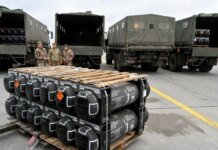
Speed is the heartbeat of reliable web scraping. Faster scrapers finish jobs before windows close, cost less to run, and leave more room for retries when something goes sideways. The good news? You don’t need exotic hardware to get there—just a disciplined approach to finding and fixing the right bottlenecks.
Profile the Bottlenecks Before You Tune Anything
Start by measuring where time actually disappears. Add lightweight timers around network requests, parsing, data writes, and queue operations. Record average latency, p95, and p99 so you see tail behavior, not just the mean. You might discover that DNS resolution adds 150 ms per request, HTML parsing eats 40% of CPU, or your database commits block everything every few seconds.
Separate fetch time from parse time. If fetch is slow, think networking and concurrency. If parsing is slow, optimize selectors and libraries. If storage is slow, batch writes or switch to append-friendly formats. A few minutes of instrumentation prevents weeks of guesswork.
Trim the Payload: Fetch Less, Parse Less
Every unnecessary byte costs time. Prefer lightweight HTTP clients over full browser automation when the page doesn’t require dynamic rendering. When you must run a headless browser, block non-critical resources (images, fonts, ads) and target only the selectors you need. Use conditional requests (ETags/If-Modified-Since) for pages that rarely change, and cache stable assets like sitemaps.
Minimize HTML parsing by scoping queries to tight containers and avoiding expensive wildcard selectors. If the site exposes a documented endpoint, use it—structured JSON beats heavy DOM traversal. Finally, gzip and HTTP/2 support are your friends: negotiate compression and multiplex requests over fewer connections to shave round-trips.
Scale Concurrency with Control, Not Chaos
More workers aren’t always faster. Aim for “just enough” concurrency to saturate your network and CPU without triggering throttles. Use a global rate limiter, per-domain concurrency caps, and token buckets for politeness. Connection pools cut handshake overhead, while exponential backoff keeps retries from stampeding.
Choose the right model for your stack: event loops for I/O-bound work, threads for mixed workloads, and processes for CPU-heavy parsing. Warm up gradually—ramp from 5 to 20 to 100 concurrent requests while monitoring error rates and median latency. If errors spike or p95 balloons, dial it back.
| Technique | Where It Helps | Typical Speedup |
| Connection pooling | High request volume to same host | 1.2×–2× |
| HTTP/2 multiplexing | Many small requests | 1.1×–1.5× |
| Async I/O (event loop) | I/O-bound crawling | 2×–10× (vs. naive sync) |
| Batching writes | Database/file sinks | 1.5×–3× |
| Selective rendering | Mixed static/dynamic sites | 2×+ (reduce headless use) |
| DNS caching | Multi-domain crawls | 1.1×–1.4× |
Optimize the Network Path: Latency, Routing, and IP Strategy
Latency compounds at scale. Reuse TCP/TLS handshakes with keep-alive, enable HTTP/2 where possible, and cache DNS aggressively. Place your scraper close to targets (region-aware runners) to shave 30–100 ms per hop. When targets are geo-sensitive or rate-limited by origin, rotate high-quality exit nodes and match the region of your workload to the site’s hosting region to avoid cross-continent detours.
Reliable, well-maintained proxy networks also stabilize throughput under heavy concurrency. If you need flexible location targeting, sticky sessions, and consistent uptime, consider providers like proxys.io to keep request speeds predictable while giving you granular control over sessions and geolocation.
Parse Faster and Store Smarter
Parsing speed is often overlooked. Favor compiled or SIMD-accelerated parsers where available and avoid unnecessary DOM normalization. Stream large responses instead of loading entire payloads into memory, and process line-by-line for NDJSON or CSV. Pre-compile frequent selectors, and normalize text once instead of repeatedly in inner loops.
On the storage side, batch inserts and use bulk loaders. Write append-only logs during crawls and move transformation/validation to downstream jobs. Columnar or compressed formats can shrink I/O costs dramatically. Above all, avoid per-row transactions—commit in chunks.
A Minimal Checklist You Can Apply Today
- Add timers to fetch, parse, and write steps; track p95/p99 latencies
- Enable HTTP keep-alive, HTTP/2, compression, and DNS caching
- Block images/fonts in headless sessions; prefer raw HTTP when possible
- Cap concurrency per domain and apply global rate limits with backoff
- Use connection pools and warm them up before peak throughput
- Batch database/file writes; switch to NDJSON for streaming pipelines
- Co-locate scrapers with targets to reduce round-trip time
- Rotate stable exit nodes with sticky sessions when session continuity matters
Putting It All Together for Sustainable Speed
Fast scrapers aren’t the result of a single trick; they’re systems where each stage cooperates with the next. You measure, trim payloads, schedule work carefully, reuse connections, parse efficiently, and write in batches. The compounding effect is what moves you from “works sometimes” to “finishes on schedule, every time.” Keep your instrumentation in place, revisit limits as targets evolve, and treat performance as a habit rather than a project. That mindset will keep your pipelines quick, resilient, and cost-effective for the long run.






























